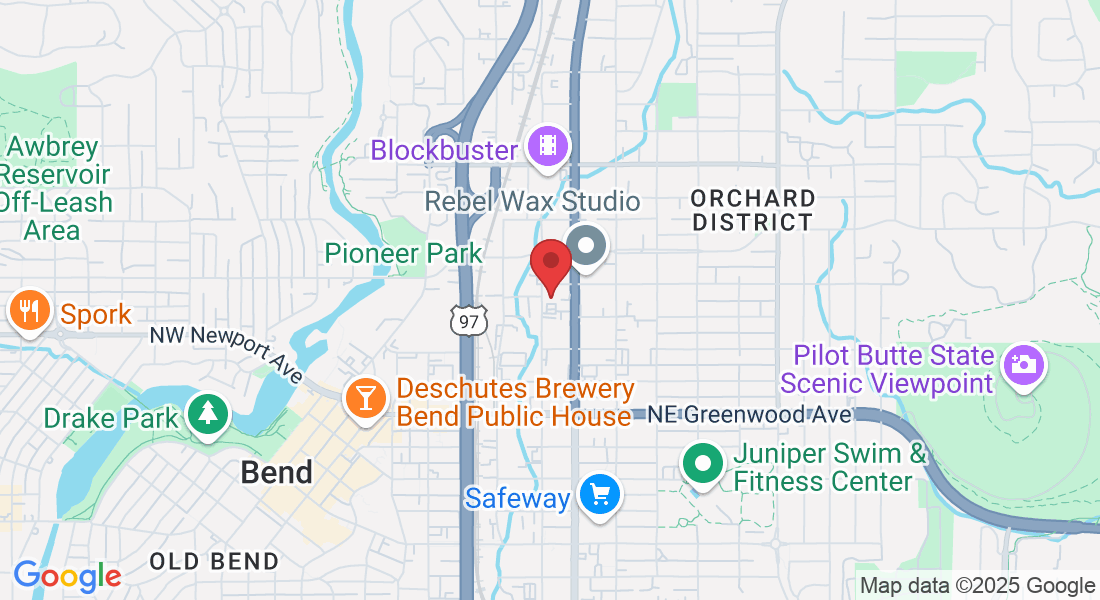Virtual Reality Physical Therapy
Virtual Reality Physical Therapy: A New Era of Healing at PhysioFIT
At PhysioFIT, we believe in embracing the latest advancements in physical therapy to provide our clients with unparalleled care. Our Virtual Reality Physical Therapy program is at the forefront of this innovative approach, blending cutting-edge technology with the expert guidance of Tanner Sommers, PT, DPT. This immersive experience not only enhances the healing process but also brings a level of engagement and precision to rehabilitation that was once unimaginable.
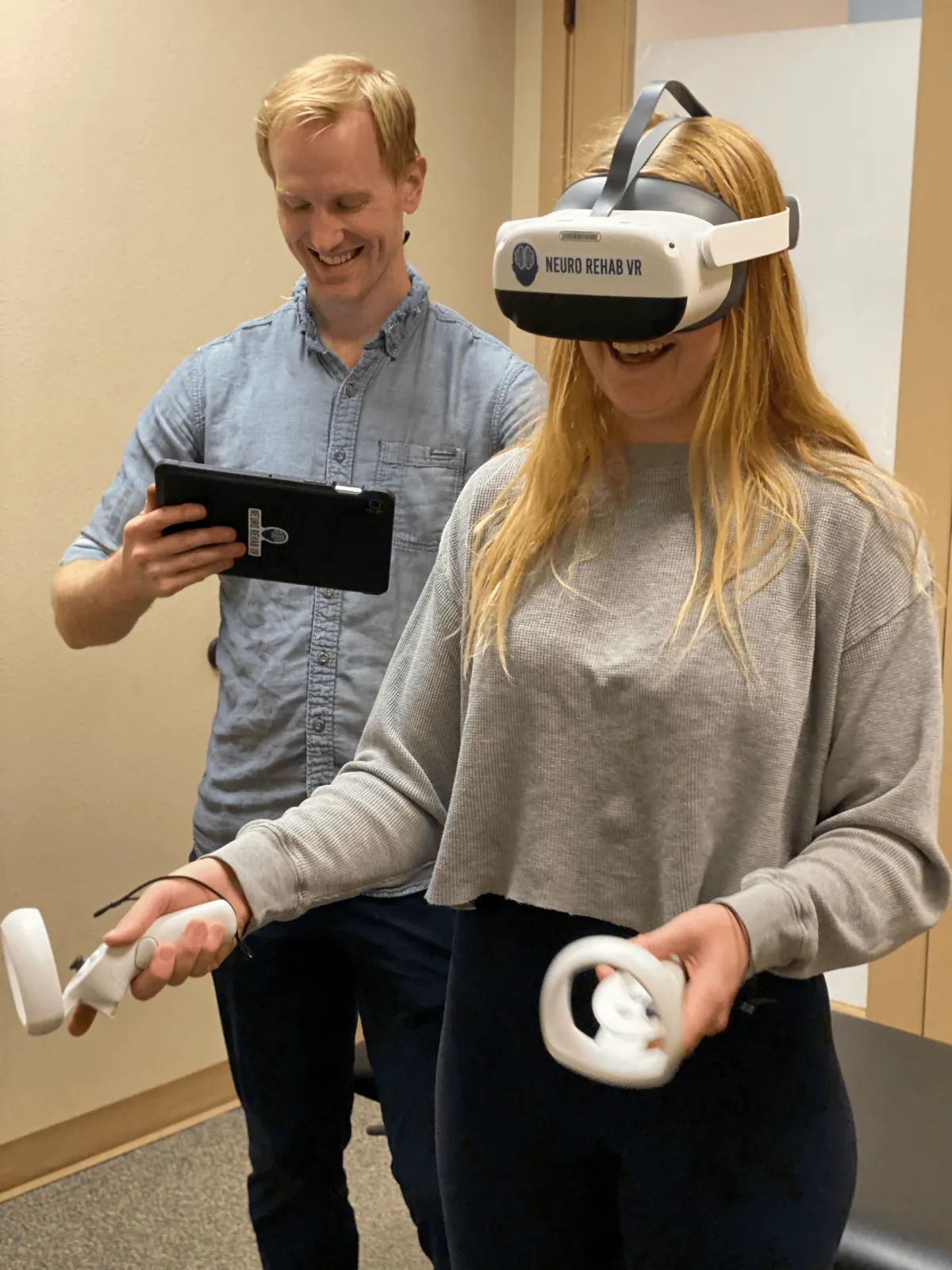
The Advantages of VR Physical Therapy
Immersive Engagement: With VR, you're not just doing exercises; you're playing games designed to help you heal, making the time fly by.
Precise Rehab Exercises: VR allows for pinpoint accuracy in therapy, helping to ensure each movement is contributing to your recovery.
Motivating Feedback: Instant feedback from the VR system encourages you to keep going, showing you how far you've come and where you're headed.
Customized Therapy Environments: VR can simulate environments and scenarios tailored to the patient's therapy goals, allowing for a customized experience that can adapt to their progress and preferences.
Enhanced Cognitive Engagement: By stimulating both the body and mind, VR therapy can help improve cognitive functions alongside physical abilities, leading to a more comprehensive rehabilitation process.
How Does Virtual Reality Physical Therapy Work?
Virtual Reality (VR) Therapy at PhysioFIT operates on the foundational concept of neuroplasticity—the brain's remarkable ability to reorganize itself by forming new neural connections throughout life. This ability is harnessed through repetitive practice and stimulation. Here's how our system takes advantage of this principle to aid in rehabilitation:
Multisensory Stimulation: Our VR system engages multiple senses simultaneously. By stimulating the vestibular system (which deals with balance), vision, proprioception (the awareness of body position and movement), cognitive functions through multitasking, and providing both haptic (touch) and auditory feedback, the therapy creates a rich environment for the brain to build new pathways. This multisensory approach is key to creating a robust and effective rehabilitation experience.
Task-Specific Training: The VR programs at PhysioFIT are designed to support task-specific training. This means the activities and games within the VR environment are tailored to help patients regain skills and abilities relevant to their daily life, work, or recreational activities. Whether it's returning to a sport or just the ability to perform daily tasks, the VR training is focused on practical and meaningful outcomes.
Customized Therapy Sessions: Our therapists, equipped with in-depth knowledge and tools provided by the VR system, have the capability to control and customize each aspect of the user experience. They ensure that each session is not only effective but also meets the specific challenges and therapy goals of the patient. This customization is critical to providing a session that is both beneficial and engaging for the patient.
Artificial Intelligence and Machine Learning: Neuro Rehab VR's system incorporates advanced technologies such as artificial intelligence (AI) and machine learning (ML) within its games and exercises. These technologies enable the system to automatically adjust to the patient's level of ability and progress. As the patient interacts with the system, AI algorithms analyze performance and dynamically adapt the difficulty and type of exercises in real-time. This ensures that patients are constantly challenged at an appropriate level for their current abilities, promoting optimal recovery and engagement.
The Power of Neuroplasticity: By utilizing VR therapy, we're tapping into the brain's plasticity to make recovery from injury a more dynamic and accelerated process. The goal is to create an environment where the patient can repeatedly perform targeted movements and tasks, leading to stronger neural connections and, ultimately, better motor function.
In essence, the VR therapy system at PhysioFIT is not just a set of exercises; it's a sophisticated, adaptable, and personalized therapy tool designed to engage the brain's natural ability to heal and adapt, ensuring that each patient can achieve the best possible outcomes in their rehabilitation journey.
Neuro Rehab VR: Our Technology Partner
Our partnership with Neuro Rehab VR, a Texas-based trailblazer in VR therapy solutions, enables us to offer the most advanced VR therapy system available.
Neuro Rehab VR's XR Therapy System is a clinically validated and FDA-registered platform that transforms patient care through immersive games and activities tailored to each patient’s therapy plan. The system includes:
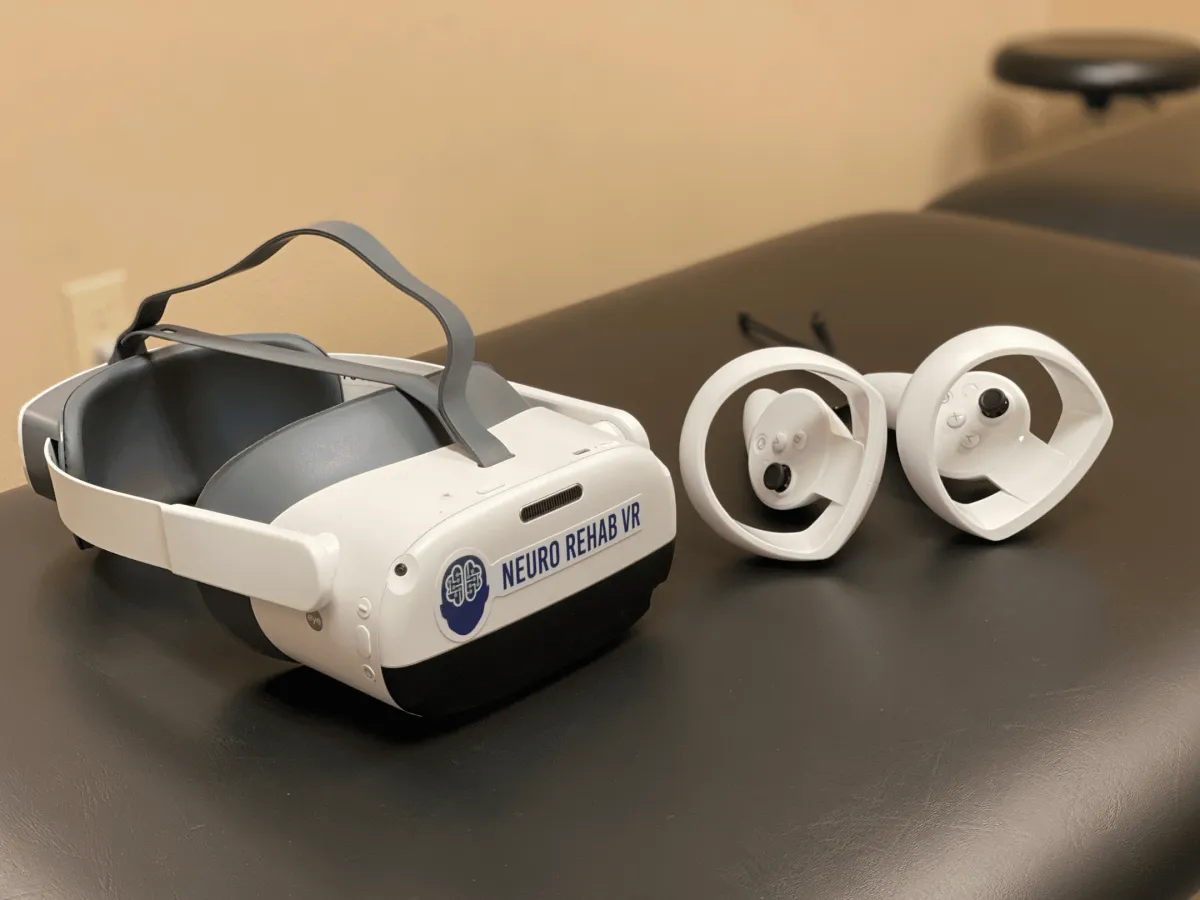
Latest Technology: The XR Therapy System revolutionizes the therapeutic experience with state-of-the-art VR equipment, including headsets, controllers, and a specialized tablet for seamless control and interaction.
Comprehensive Care: Therapists can provide immersive and adaptive care with customized games and activities that cater to each patient's specific needs and abilities.
Data-Driven Results: A proprietary Data Analytics Portal allows for the measurement, tracking, and quantification of patient progress, ensuring targeted and efficient therapy outcomes.
Neuro Rehab VR has distinguished itself through extensive research and development, resulting in over 30 different activities and use cases ranging from stroke recovery to balance enhancement. The versatility of their system supports a wide demographic, including neuro rehab, orthopedics, geriatrics, and pediatrics, backed by over three decades of research confirming the effectiveness of VR in various aspects of rehabilitation
.
The XR Therapy System is celebrated for its ease of integration into clinical workflows, making it a turn-key solution for modern physical therapy practices. With its comprehensive design, therapists at PhysioFIT can control and guide the patient experience with a companion tablet, while also utilizing robust data analytics to track and quantify each patient's progress.
Furthermore, Neuro Rehab VR has garnered significant acclaim, including press coverage and industry accolades, for their innovation and contributions to healthcare technology. Their presence extends across various healthcare facilities in the U.S., from hospitals and outpatient clinics to senior living facilities, demonstrating their system's wide acceptance and success
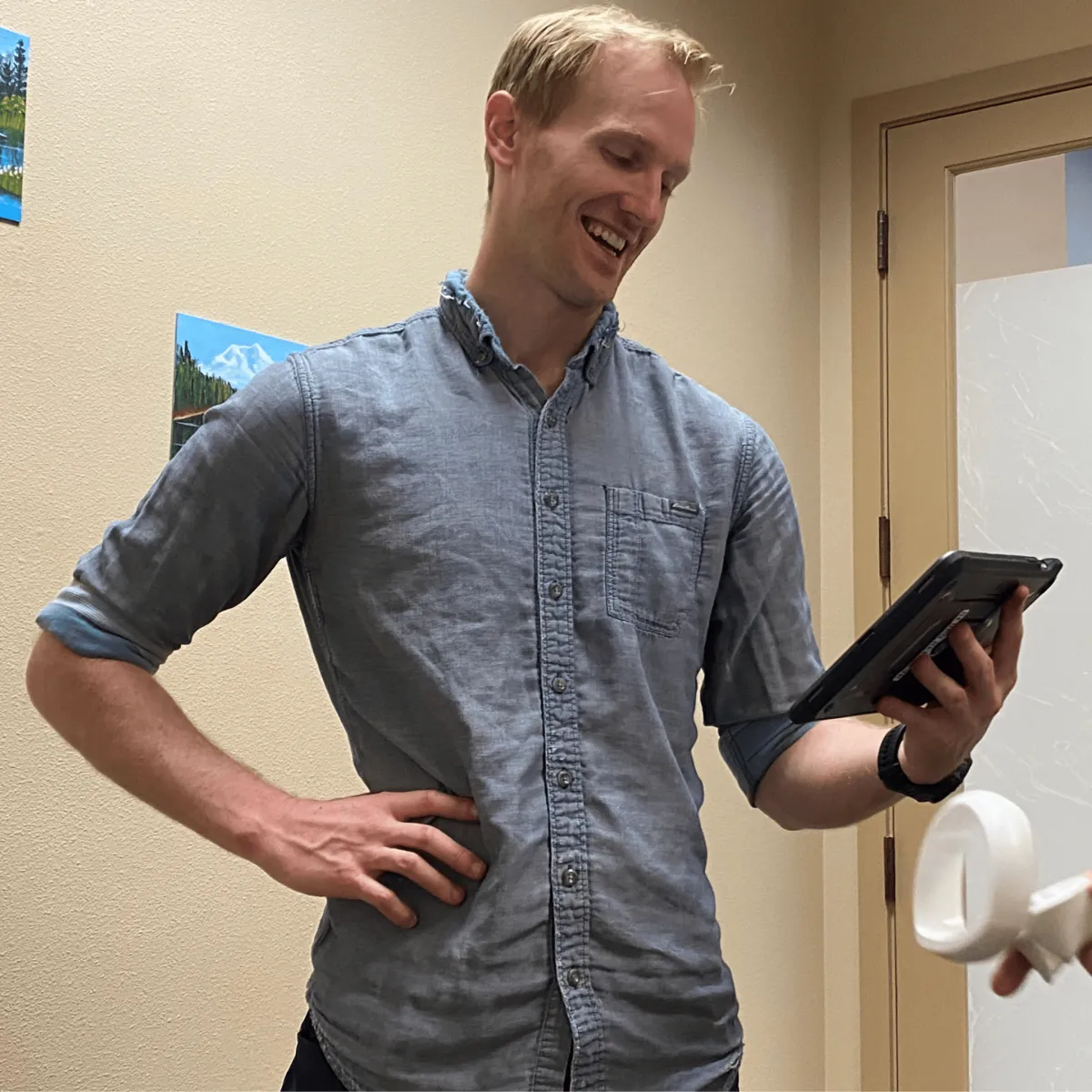
Meet Tanner Sommers, PT, DPT - Your Virtual Reality Expert
Tanner Sommers is a leading physical therapist at PhysioFIT who expertly combines his extensive education in Exercise Science and Physical Therapy with advanced certifications in EMG/NCV and Level III dry needling. His innovative approach to rehabilitation is highlighted by his leadership in Virtual Reality Physical Therapy, utilizing Neuro Rehab VR's pioneering technology.
Certified in VR rehabilitation, Tanner is adept at creating immersive, personalized therapy sessions that prioritize patient engagement and holistic recovery. His commitment to integrating the latest in therapeutic innovation with compassionate care ensures that every patient is on a path to regain their fullest potential, making PhysioFIT a hub for forward-thinking physical therapy in Bend.
Please Note: The information provided on our website is intended for general education and is not a substitute for professional medical advice. Each individual's situation and body is different. Therefore, what may work for one person may not work for another. We care about your well-being and advise you to reach out to us to discuss your specific needs before implementing any advice from our website.
Your Source for All Things Physical Therapy in Bend Oregon
The PhysioBlog
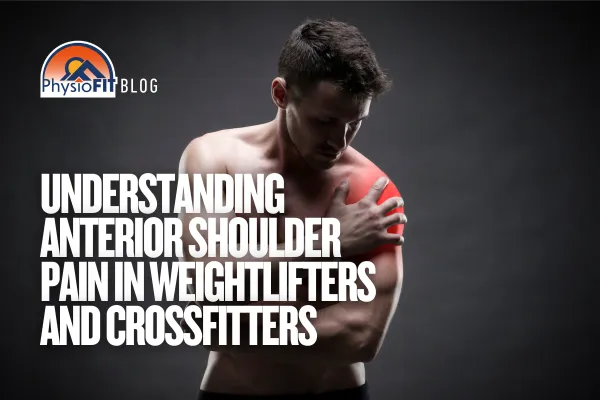
Understanding Anterior Shoulder Pain in Weightlifters and CrossFitters
Anterior shoulder pain is a common complaint among weightlifters and CrossFit athletes, often attributed to a variety of factors. One prevalent issue underlying this pain is weakness in the shoulder external rotators. In fact, many athletes experiencing anterior shoulder discomfort tend to have external rotator strength in the lower 50% when compared to age-related norms. This weakness can lead to improper shoulder mechanics and increased stress on the anterior structures of the shoulder joint, particularly the labrum.
The Role of Shoulder External Rotators
The shoulder external rotators, primarily the infraspinatus and teres minor, play a crucial role in stabilizing the humeral head within the glenoid socket. When these muscles are weak, the humeral head can shift forward, leading to excessive stress on the anterior components of the shoulder. This stress is particularly problematic for the labrum, a cartilage structure that provides stability and cushioning within the shoulder joint.
Biceps Tendonitis: A Common Misdiagnosis
Due to the close proximity of the biceps tendon to the labrum, anterior shoulder pain is often misdiagnosed as biceps tendonitis. The long head of the biceps tendon attaches directly to the superior portion of the labrum, making it a common secondary source of pain. However, in many cases, the labrum itself is the primary pain generator, with biceps tendonitis being a secondary condition arising from underlying labral pathology.
Self-Assessment for Biceps Tendonitis
If you have been diagnosed with biceps tendonitis, there is a simple test you can try to help identify whether your pain is truly coming from the biceps tendon or if the underlying cause may be labral-related. Perform a very heavy bicep curl; if this movement does not exacerbate your pain, it is likely that the biceps tendon is not the primary issue. Instead, the labrum and poor shoulder mechanics may be the root cause of your discomfort.
Addressing the Root Cause
To effectively manage and prevent anterior shoulder pain, addressing the root cause—external rotator weakness—is crucial. Incorporating specific strengthening exercises such as:
• External rotation with resistance bands
• Face pulls to engage the rotator cuff and scapular stabilizers
• Wall walks to emphasize rotator cuff and scap stabilizers
• Isometric holds to improve endurance and stability
Additionally, focusing on better technique during overhead lifts, pressing movements, and Olympic lifts can help reduce strain on the anterior shoulder structures.
Conclusion
Anterior shoulder pain in weightlifters and CrossFit athletes is often linked to inadequate external rotator strength, among other factors, leading to poor joint positioning and stress on the labrum. While biceps tendonitis is frequently diagnosed, it may not always be the true cause of pain. By strengthening the external rotators and optimizing shoulder mechanics, athletes can mitigate pain and improve performance. If you’re dealing with persistent shoulder pain, consider assessing your external rotator strength and seeking guidance from the barbell rehab experts and performance therapists at PhysioFit for a tailored rehabilitation approach.
Copyright PhysioFIT 2025 . All rights reserved


